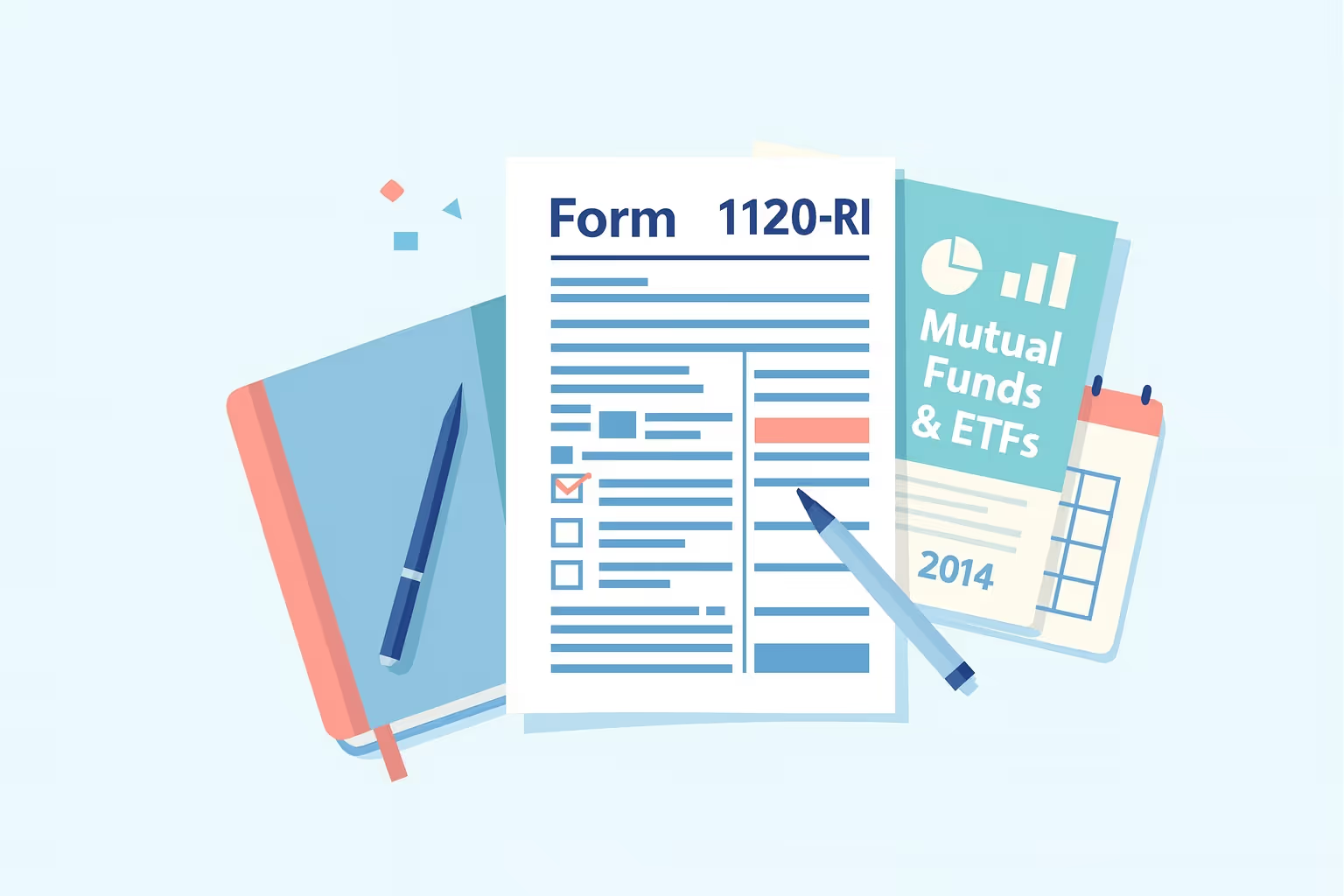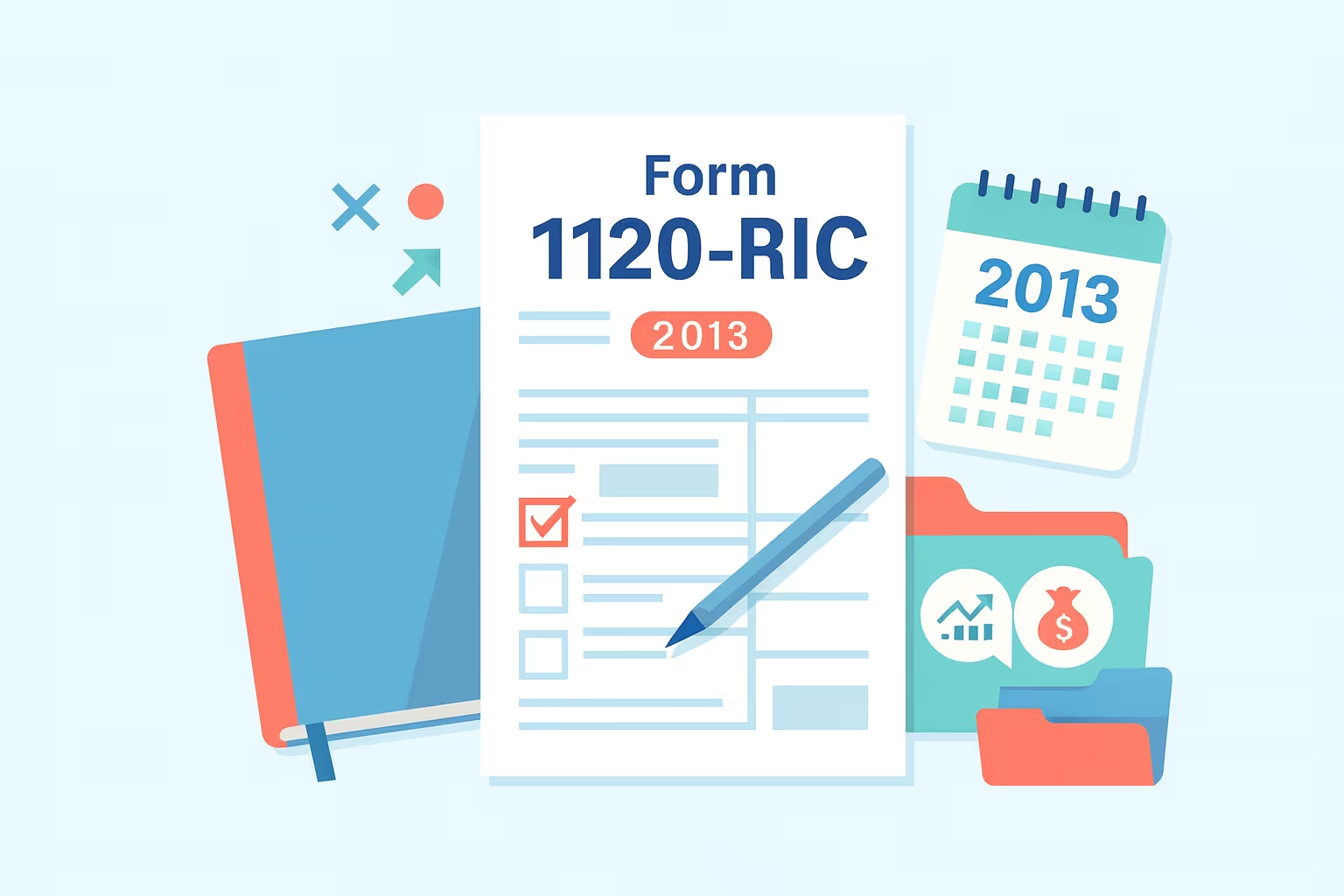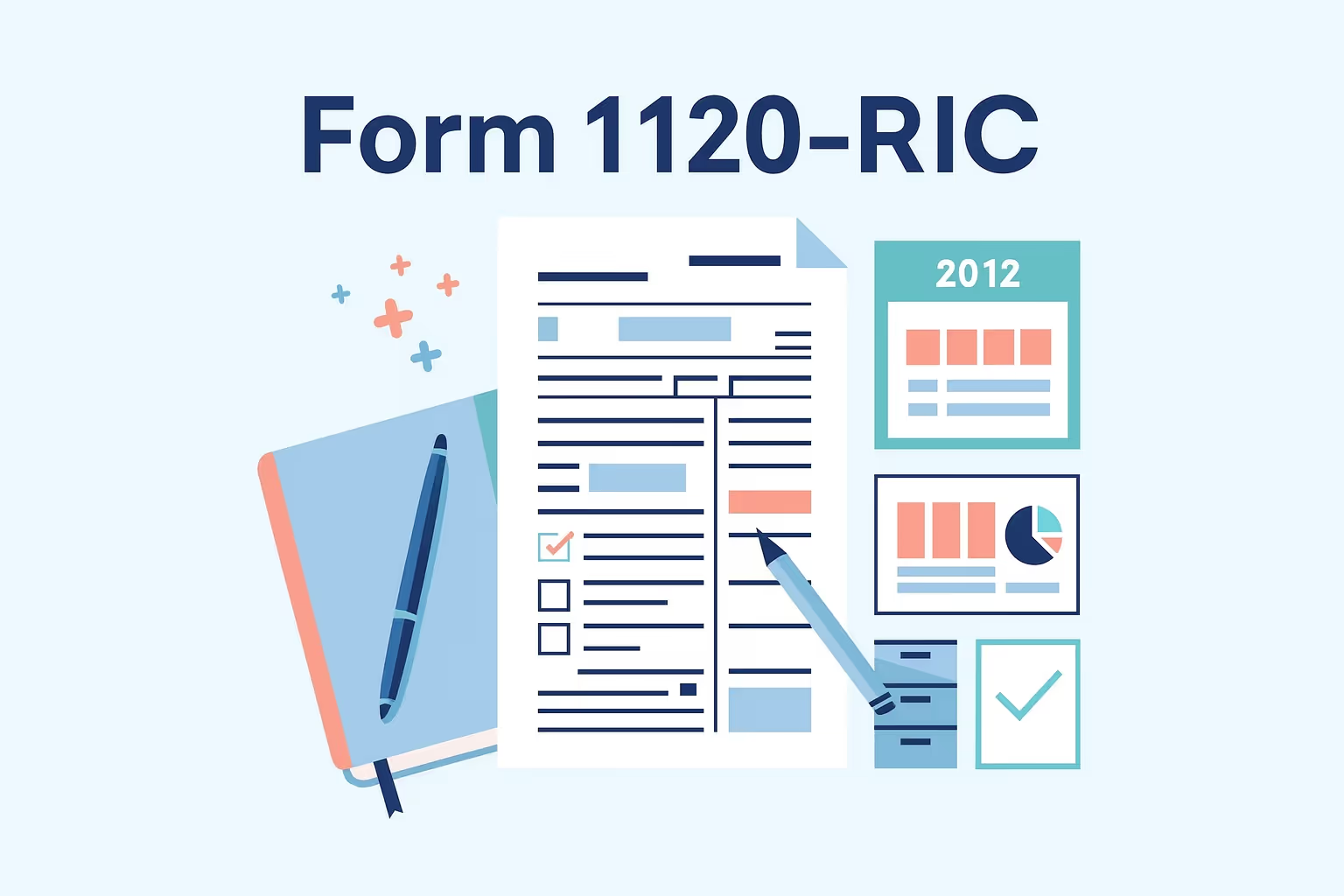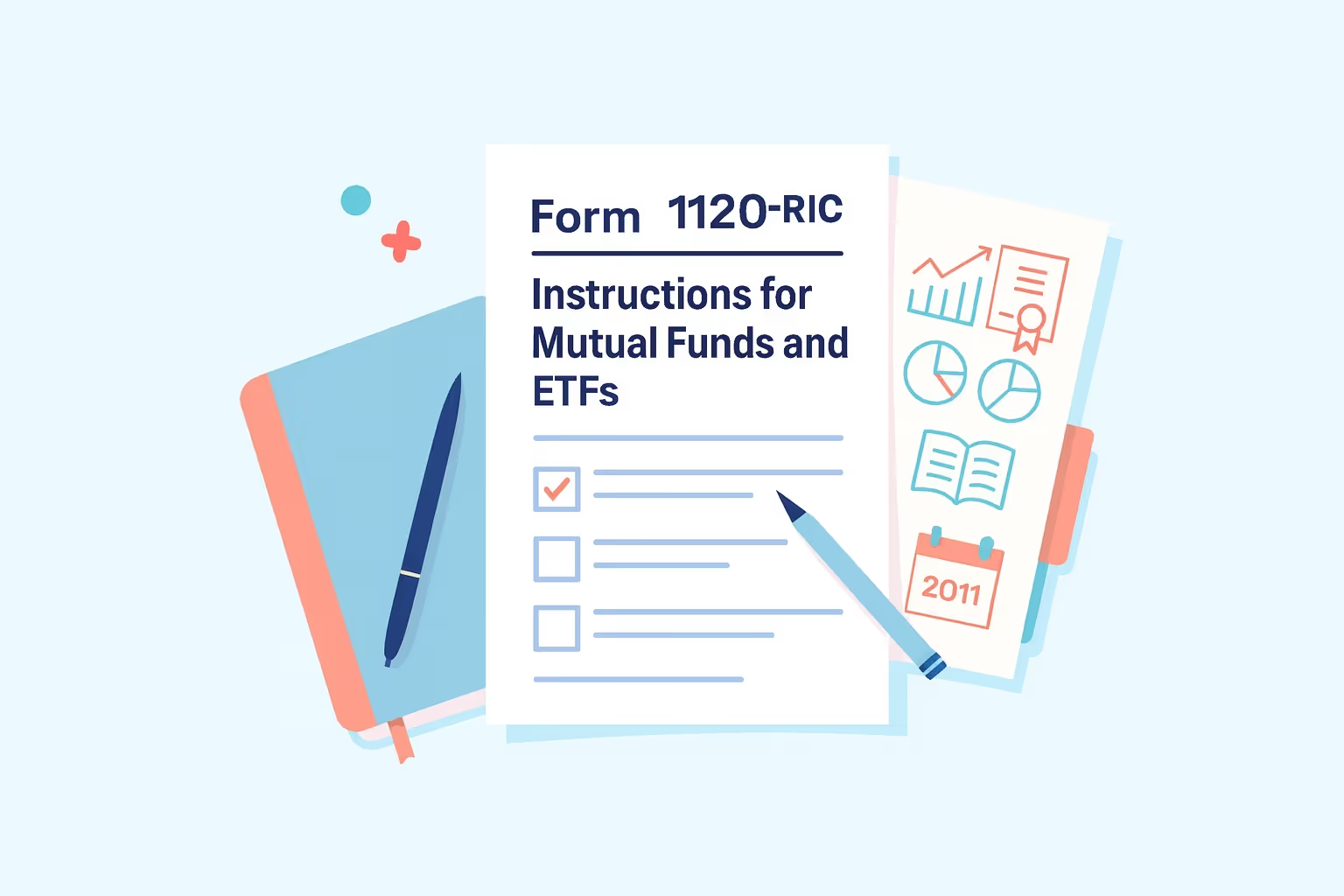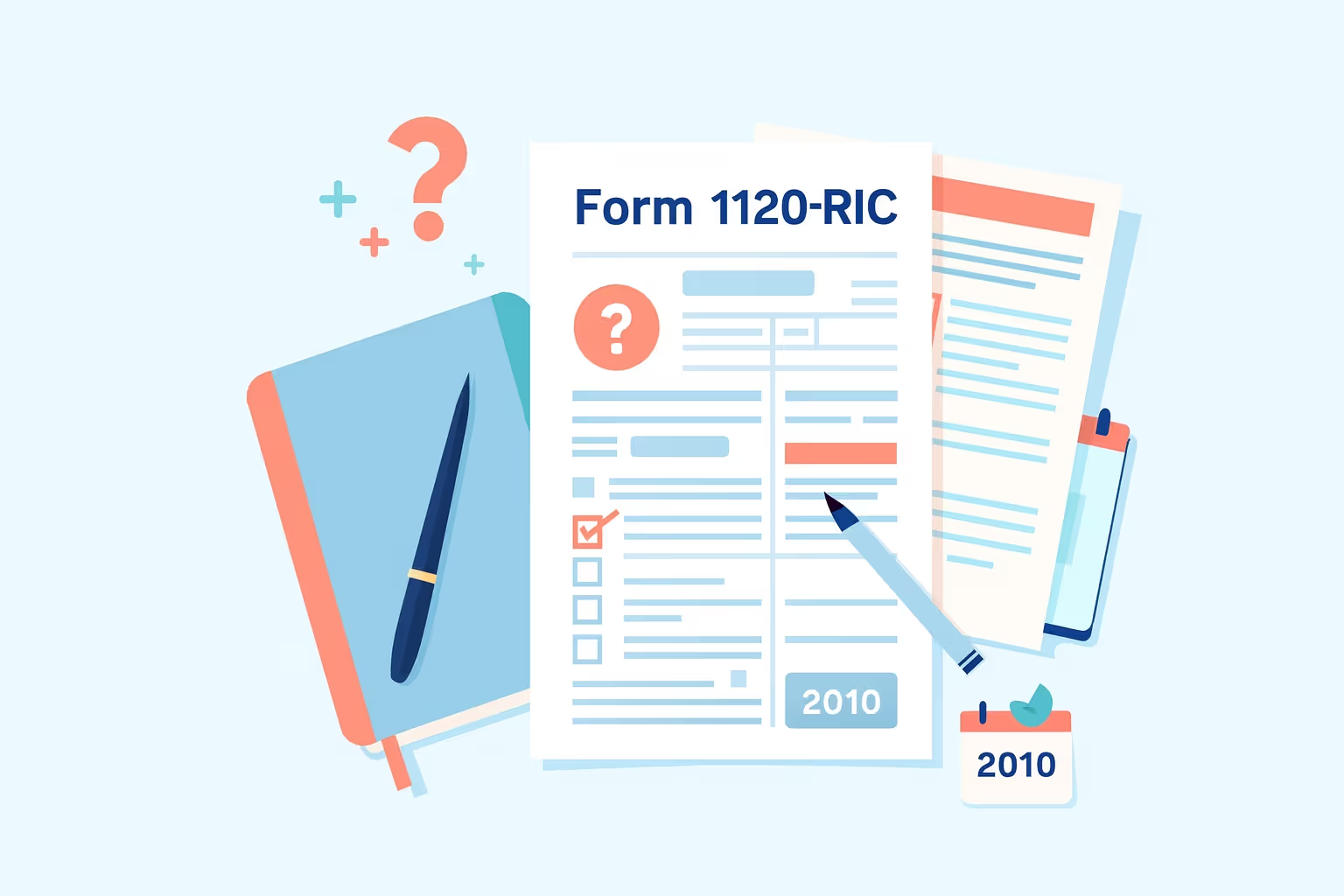
What IRS Form 1120-RIC (2023) Is For
Regulated investment companies use the 2023 IRS Form 1120-RIC to report their income, deductions, and credits to the IRS using the RIC Tax Return. RICs include mutual funds, exchange-traded funds, and unit investment trusts that elect special tax treatment under the Internal Revenue Code. This income tax return is required if a domestic corporation is a RIC under the Investment Company Act and distributes at least 90% of its investment company taxable income to shareholders each year. Filing ensures that the company calculates corporate income tax and excise tax correctly and reports taxable income, net investment income, and dividends.
For a detailed breakdown of filing requirements, eligibility rules, and step-by-step instructions, see our guide on How to File Federal Form 1120-RIC for Tax Year 2023
When You’d Use IRS Form 1120-RIC (2023): Income Tax Return for a Regulated Investment Company
For 2023, a domestic corporation must file Form 1120-RIC to report securities and investment profits, capital gains, and other income. Missing the due date, not making estimated tax payments, or receiving an IRS notice requesting the corporation's return can lead to late filing. Errors in the original taxable income, deductions, or dividends report require amended filings. The IRS allows late or corrected returns but may charge penalties, interest, and excise tax based on the total tax. Follow filing instructions to maintain RIC status and comply with federal tax law.
Key Rules for the 2023 Tax Year
- Updated penalty limits: The Internal Revenue Service increased the minimum late-filing penalty to $485 for returns filed more than 60 days after the due date. This rule applies to all IRS forms filed by domestic corporations.
- RIC qualification requirements: To qualify as a regulated investment company, at least 90 percent of the gross income must come from dividends, interest, and securities gains. This percentage determines whether the entity maintains its RIC status for taxation.
- Distribution obligations: To avoid excise tax, the corporation must distribute at least 90 percent of investment company taxable income and 98 percent of capital gain dividends each calendar year.
- Diversification tests: RICs must comply with asset diversification requirements, ensuring that no more than 25 percent of total assets are invested in a single issuer’s securities.
- SEC registration compliance: The Securities and Exchange Commission requires RICs to remain properly registered under the Investment Company Act before filing their corporate income tax return.
- Filing standards: Entities must report total tax, total assets, and gross income accurately, following all applicable tax law rules under the Internal Revenue Code and including all required schedules and other forms.
Step-by-Step (High Level)
Step 1: Gather Financial and Account Information
Collect the employer identification number, investment reports, and the prior-year corporation’s return to ensure accuracy when preparing the current year Form 1120-RIC. Confirm income, dividends, and deductions using reliable accounting records.
Step 2: Complete the Correct Form 1120-RIC U.S. Income Tax Return
Use the official 2023 version of Form 1120-RIC U.S. and follow the IRS instructions for each line item. Enter taxable income, dividends paid, and deductions to accurately determine total tax liability and applicable credits.
Step 3: Attach Required Schedules and Other Forms
Include Schedule D for capital gains and losses, Schedule A for dividends paid, and other forms, such as Form 8613 for excise tax. Ensure every attachment matches the investment company’s figures reported in the main return.
Step 4: Verify Calculations and Estimated Tax Payments
Reconcile income tax liability with estimated tax payments made during the tax year. Confirm all deductions, expenses, and earnings are properly documented before submitting the corporate tax return to the Internal Revenue Service.
Step 5: File and Retain Records
If eligible, mail the completed return to the correct IRS processing center or e-file. Keep copies of all filings, proof of payments, and correspondence to comply with federal recordkeeping requirements and to address any later tax inquiries.
Learn more about federal tax filing through our IRS Form Help Center
Common Mistakes and How to Avoid Them
- Inaccurate income reporting: Many regulated investment companies fail to include all gross income or other income sources, which causes errors in total tax computation and underreporting of taxable income.
- Misapplied deductions: Corporations sometimes miscalculate the dividends received deduction, leading to higher tax liability and potential compliance issues with the Internal Revenue Service.
- Improper excise tax reporting: Failure to complete Form 8613 or miscalculating the 4 percent excise tax on undistributed income can create additional liabilities under federal tax law.
- Asset test violations: Neglecting quarterly asset diversification rules may disqualify an investment company from RIC status, increasing its corporate income tax burden.
- Late estimated payments: Missing estimated tax payments throughout the calendar year results in penalties and unnecessary interest on unpaid taxes owed to the IRS.
- Incorrect signatures: Only an authorized corporate officer should sign the corporation’s return. Signatures from accountants or non-officers may invalidate the filing.
What Happens After You File IRS Form 1120-RIC (2023)
After receiving the corporation's income tax return, the IRS processes it within 8-12 weeks. The IRS will send clarification requests for additional information or corrections. Manual review delays late or amended filings. Once processed, the IRS calculates tax liability, applies estimated tax payments, and issues balance-due notices or refunds. Excise taxes may be levied on RICs that underpay taxes or fail to distribute. Accurate investment and distribution records ensure tax and SEC reporting compliance.
FAQs
What is the penalty for filing IRS Form 1120-RIC (2023) late?
The Internal Revenue Service assesses a penalty of 5 percent of unpaid tax per month, up to 25 percent, for late filing. Returns filed more than 60 days late incur a minimum $485 penalty.
How do estimated tax payments affect the total tax on Form 1120-RIC U.S.?
Estimated tax payments reduce a corporation’s total tax liability by applying previous payments against the calculated income tax. This prevents underpayment penalties and keeps the corporation in good standing.
Does a personal holding company need to file a separate corporation income tax return?
A personal holding company classified as a regulated investment company must still file Form 1120-RIC. It reports gross income, deductions, and dividends paid according to IRS instructions.
How is gross income calculated for an investment company under Form 1120-RIC (2023)?
Gross income includes dividends, interest, and gains from securities transactions. To determine its net income accurately, the investment company must include all taxable and tax-exempt income.
What are the requirements for reporting other income on Form 1120-RIC (2023)?
Other income may include securities loans, foreign exchange gains, or miscellaneous investment earnings. Corporations must list these figures separately to ensure total income and tax computation accuracy.
What is the purpose of including an employer identification number on Form 1120-RIC?
The employer identification number identifies the corporation filing the return. The IRS uses it to track payments, credits, and compliance under federal tax law.
What if the corporation’s total tax exceeds its estimated payments?
Suppose the total tax exceeds the estimated payments. In that case, the company must remit the balance by the due date. Failure to pay on time results in penalties and interest under the Internal Revenue Code.
For more resources on filing or understanding prior-year IRS forms, visit IRS Form 1120-RIC: Regulated Investment Company Tax Return Guide.

























